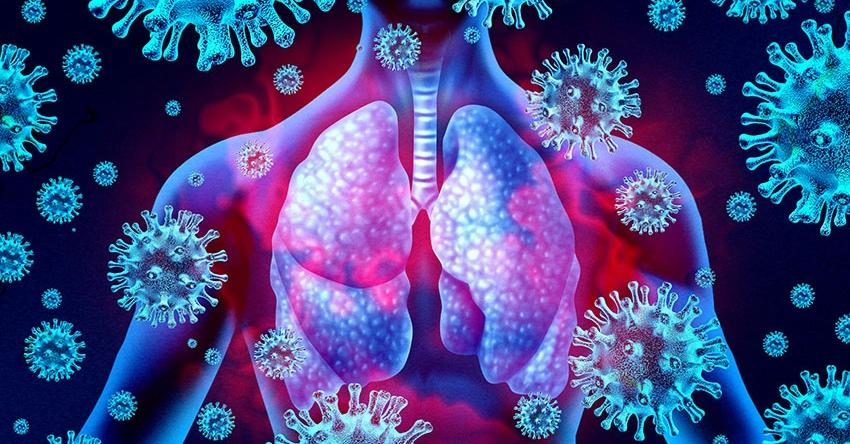Are you curious to know what is airspace disease? You have come to the right place as I am going to tell you everything about airspace disease in a very simple explanation. Without further discussion let’s begin to know what is airspace disease?
As air travel has become an integral part of modern life, various medical conditions associated with flying have come to light. Among these is a lesser-known yet significant concern called “airspace disease.” While the term might evoke images of aviation, it’s actually a medical condition that poses risks to individuals who spend time in confined spaces for extended periods. Join us as we explore what airspace disease is, its causes, symptoms, and preventive measures.
What Is Airspace Disease?
Airspace disease, also known as “aerospace physiology” or “aeroembolism,” refers to a condition in which gas bubbles, primarily nitrogen, form within body tissues due to rapid changes in pressure. This can happen when an individual is exposed to environments with varying levels of atmospheric pressure, such as when ascending to high altitudes or descending to lower ones.
Causes And Mechanisms
The primary cause of airspace disease is the effect of pressure changes on gases dissolved in bodily fluids. When pressure decreases, as is the case during ascent in an airplane or a deep-sea dive, gases that were dissolved in the bloodstream and tissues can come out of solution and form bubbles. The most common gas involved in this process is nitrogen, which is relatively insoluble in bodily fluids.
Symptoms Of Airspace Disease
The symptoms of airspace disease can vary in severity depending on factors such as altitude, rate of ascent or descent, and individual susceptibility. Mild cases might involve joint pain, fatigue, or discomfort in the ears. More severe cases can lead to symptoms similar to decompression sickness, commonly known as “the bends.” These symptoms include:
- Joint pain, often referred to as “bends”
- Chest pain
- Shortness of breath
- Confusion or dizziness
- Numbness or tingling
- Muscle weakness
Prevention And Mitigation
Preventing airspace disease involves careful planning and understanding of the environmental conditions. For air travel, the following steps can help reduce the risk:
- Gradual Pressure Changes: Aircraft cabins are pressurized to simulate lower altitudes. However, rapid changes in altitude, especially in unpressurized aircraft or during emergency descents, can increase the risk of airspace disease. Gradual changes in pressure are generally safer.
- Hydration: Staying hydrated before and during flights can help reduce the risk of gas bubble formation in bodily fluids.
- Avoid Alcohol and Sedatives: Alcohol and sedatives can impair judgment and exacerbate the effects of pressure changes. It’s advisable to avoid them, especially during flights.
- Physical Activity: Moving around and doing simple exercises during long flights can help improve blood circulation and reduce the risk of clot formation.
Seeking Medical Attention
If you suspect you might be experiencing symptoms of airspace disease, it’s important to seek medical attention promptly. Mild symptoms might resolve on their own, but more severe cases require professional medical evaluation and treatment. Hyperbaric oxygen therapy, which involves breathing pure oxygen in a pressurized chamber, is one treatment option that can help dissolve gas bubbles and alleviate symptoms.
Conclusion
While air travel and other activities involving pressure changes are generally safe for the vast majority of people, it’s essential to be aware of potential risks, especially if you have pre-existing medical conditions or are planning activities that involve significant altitude changes. By understanding the causes, symptoms, and preventive measures associated with airspace disease, you can take informed steps to ensure a safe and comfortable experience when navigating the skies.
Visit Ofstype to Get to know about more concepts like this.
FAQ
What Causes Air Space Disease?
Also stated above, airspace opacity can be caused by different materials, including water, pus, blood, cells, protein and fat.
What Does Airspace In Lungs Mean?
Air space opacification is a descriptive term that refers to the filling of the pulmonary tree with material that attenuates x-rays more than the surrounding lung parenchyma. It is one of the many patterns of lung opacification and is equivalent to the pathological diagnosis of pulmonary consolidation.
What Is An Example Of Airspace Disease?
The category of airspace-occupying diseases of the lung includes: Acute lung infections such as bacterial and viral pneumonias. Acute lung injury pattern which includes bronchiolitis obliterans/organizing pneumonia and diffuse alveolar damage. Intra-alveolar hemorrhage.
What Are The Symptoms Of Air Disease?
Reactive airway disease symptoms are similar to asthma symptoms and may include:
- Coughing.
- Wheezing.
- A feeling of tightness in the chest.
- Trouble breathing.
- Shortness of breath.
I Have Covered All The Following Queries And Topics In The Above Article
What Is Airspace Disease
What Is Airspace Disease In The Lungs
What Is Patchy Airspace Disease
What Is Airspace Disease In Lung
What Is Bilateral Airspace Disease
What Is Patchy Airspace Disease Site:Www.Quora.Com
What Is Mild Basilar Airspace Disease
What Is Nodular Lung Airspace Disease
What Is Airspace Disease Treatment
What Is Patchy Left Lower Lobe Atelectasis Or Airspace Disease
What Is A Ground Glass Airspace Disease
What Is Focl Groundglass Airspace Disease In Right Lung Apex
What Is Peripheral Airspace Disease
What Is Minor Left Basilar Linear Airspace Disease
What Is “Airspace Disease”
What Is Airspace Disease In The Lungs Site:Www.Quora.Com
What Is Multifocal Airspace Disease
What Is Airspace Disease And How Is It Treated?
What Is Right Basilar Airspace Disease?
What Is Basilar Airspace Disease
What Is Airspace Disease Teatment
What Is Airspace Disease
What is air space pneumonia
